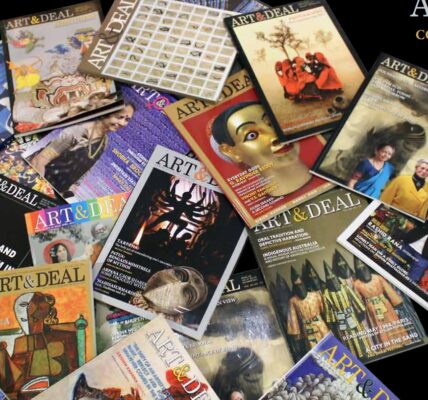 Autumn has arrived. Th e Northern Winds sway across the city and soothe the senses. Nature is such a mystery, yet it has a cycle. Life cycles that we are all caught up in and invariably follow. It defi nes our very existence and the way we live. Spring is the season of blossoming and winter carries with it a sense of rawness that some resist against and some derive pleasure from, as also trees and fl owers wither away. Likewise nature has defi ned the depiction of art in the past and continues to do so. Every civilization that has acquired the space of this humungous planet consisted of a diff erent mode of expression- be it the Harappan civilization, the Ancient Egyptian Era or the Persian Miniature style that came into being during the Mughal regime. Diff erent ideologies corresponding to each age have been expressed using art as a medium to communicate the complexities of human nature and its relation with fellow human beings or society at large and tried to construe the purpose of human existence. Th e stylistics of visual arts that have emerged in history oft en bewilder us with its deep philosophical ideas and the subsequent means employed to convey a particular thought, idea and feeling.
Autumn has arrived. Th e Northern Winds sway across the city and soothe the senses. Nature is such a mystery, yet it has a cycle. Life cycles that we are all caught up in and invariably follow. It defi nes our very existence and the way we live. Spring is the season of blossoming and winter carries with it a sense of rawness that some resist against and some derive pleasure from, as also trees and fl owers wither away. Likewise nature has defi ned the depiction of art in the past and continues to do so. Every civilization that has acquired the space of this humungous planet consisted of a diff erent mode of expression- be it the Harappan civilization, the Ancient Egyptian Era or the Persian Miniature style that came into being during the Mughal regime. Diff erent ideologies corresponding to each age have been expressed using art as a medium to communicate the complexities of human nature and its relation with fellow human beings or society at large and tried to construe the purpose of human existence. Th e stylistics of visual arts that have emerged in history oft en bewilder us with its deep philosophical ideas and the subsequent means employed to convey a particular thought, idea and feeling.
Today anyone pursuing fi ne arts has at his disposal such a plethora of knowledge that can oft en leave one overwhelmed. In this age of globalisation where culture and lifestyles do not have clearly defi ned boundaries and everything merges, it becomes all the more possible for artists to mix and match stylistics of painting and yet convey the message to the viewer in a contemporary way.
Th e term ‘contemporary’ is suggestive of the present conflicts, ideas, ethos and beliefs that have plagued the current age with an oft en intricate past. Th e Indian artists have imbibed or rather drawn inspiration in their stylistics from artistic theories and innovations practiced and propagated in the past from all over the world. Art has no religion, culture and could be attributed as universal. Contemporary artists perpetuate their rigorous practice by using a personal language to express their thoughts and feeling. To appreciate and value art one needs to read and decipher it in a certain context which means one should be well-versed with its historical connotation and its mode of representation.
Our current issue brings to you a few contemporary artists who use a highly personalized language
to communicate their experiences with the world at large. Th ey are attempting to fi nd a unique method of
expression using the existing tools available to them.
To add to the festivity, we are gearing up for an auction by Art Bull, where one can view works of emerging
and contemporary artists, Th e Masters and folk and tribal art.
We sincerely hope that readers cherish this current issue with thought-provoking articles on Cinema and
Diaspora, an analysis of a promising Bangladeshi photographer Shumon Ahmed and many more interesting
articles.
Wish you all a Happy Diwali and a prosperous New Year!
Siddhartha Tagore

